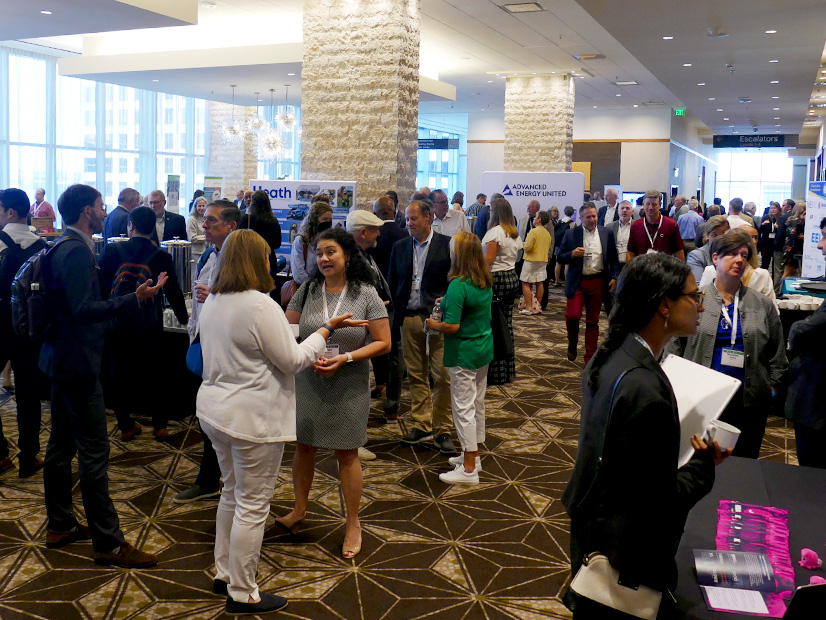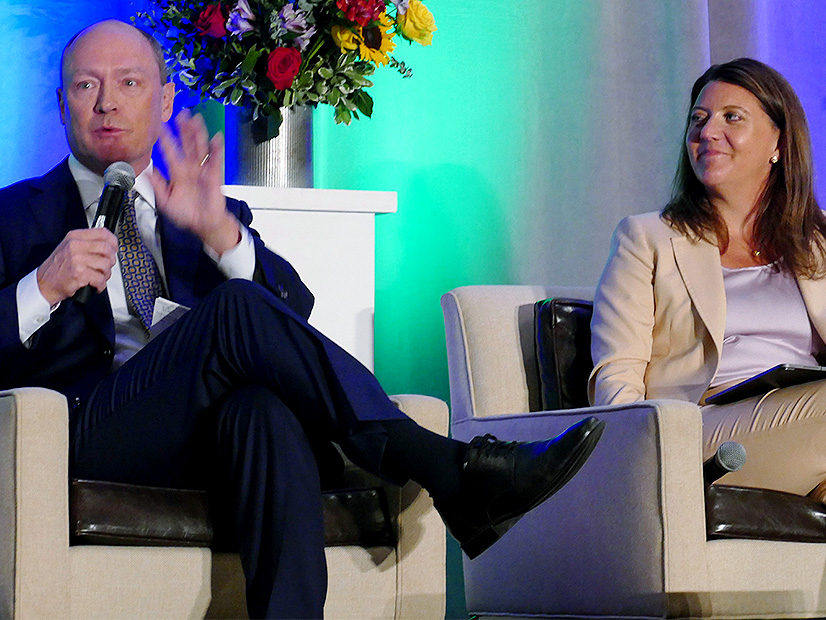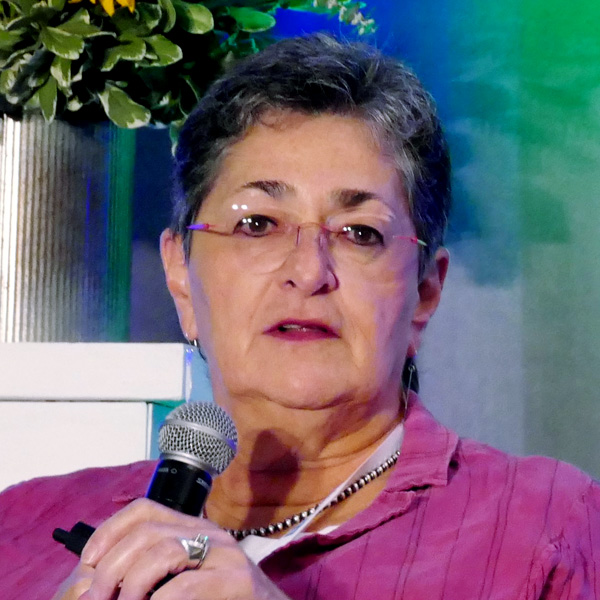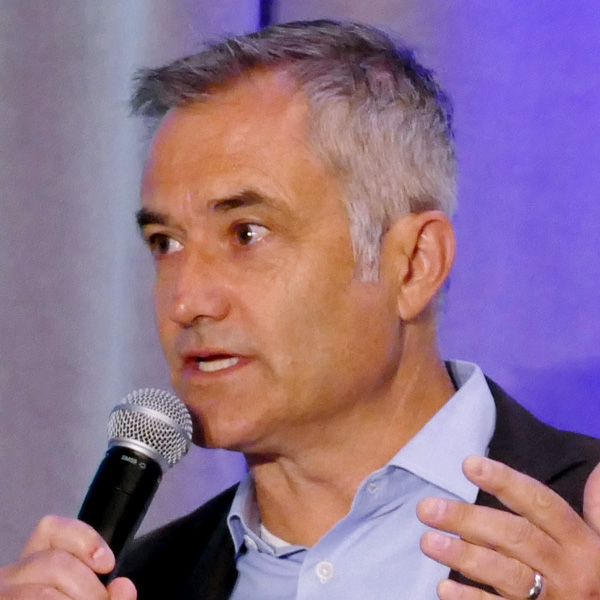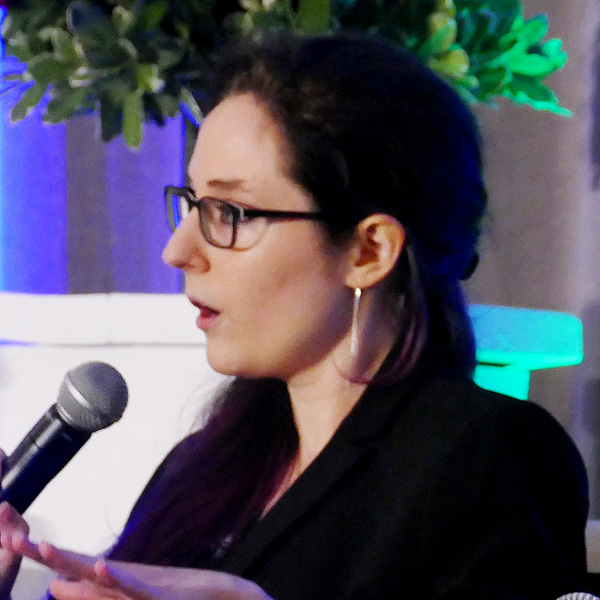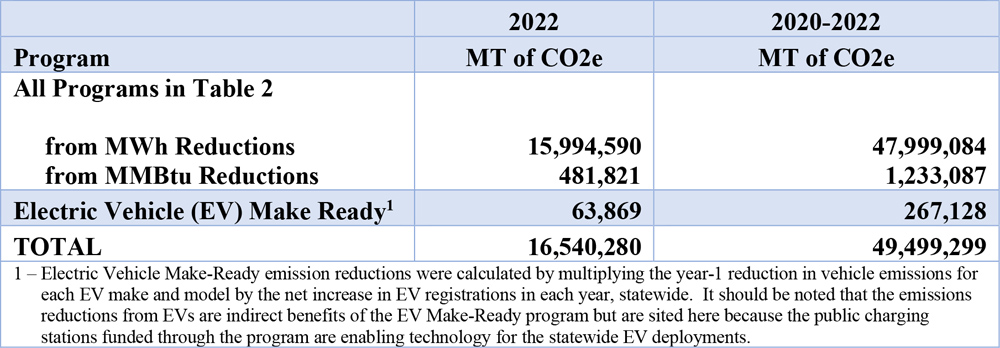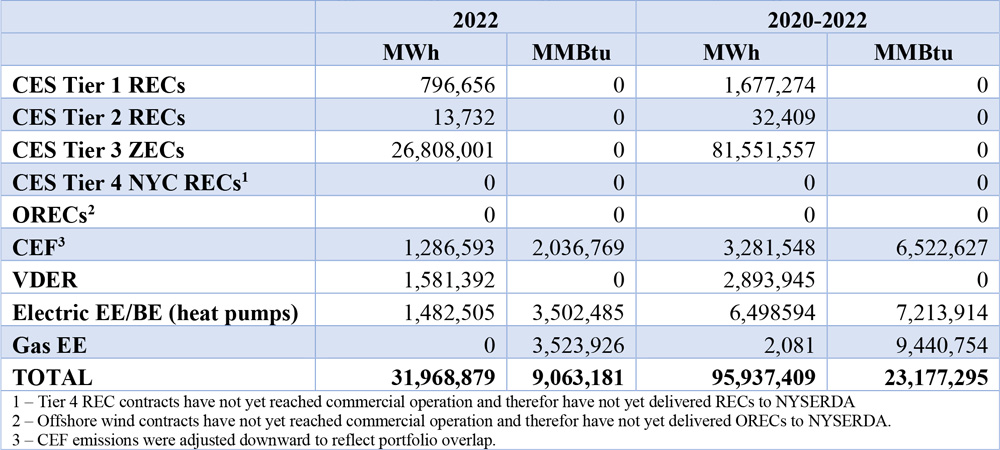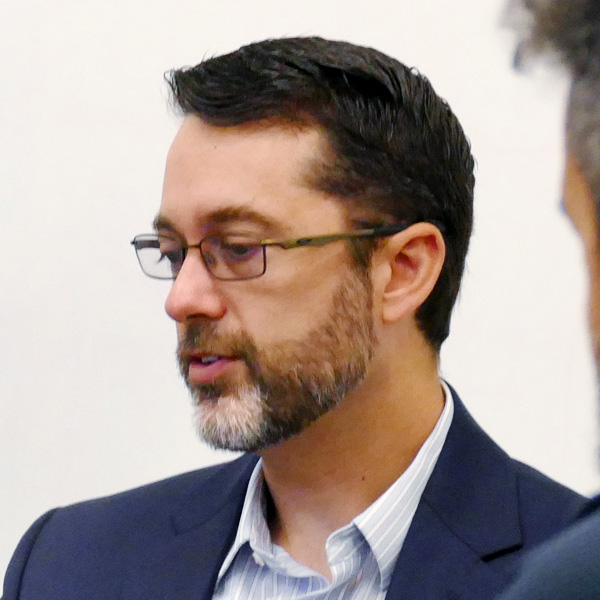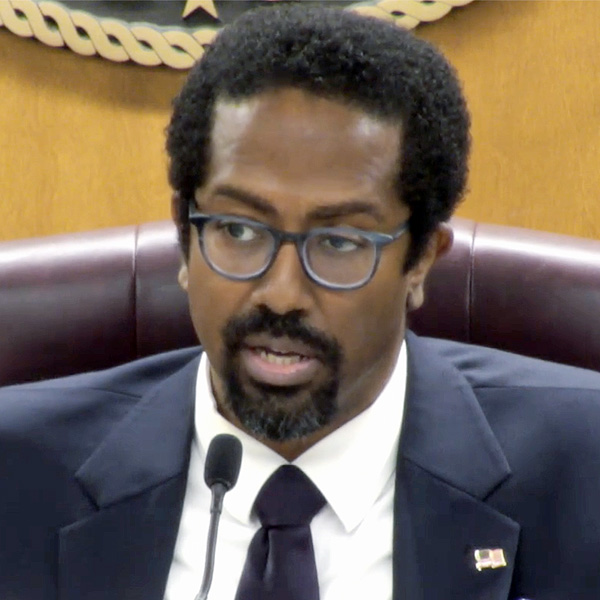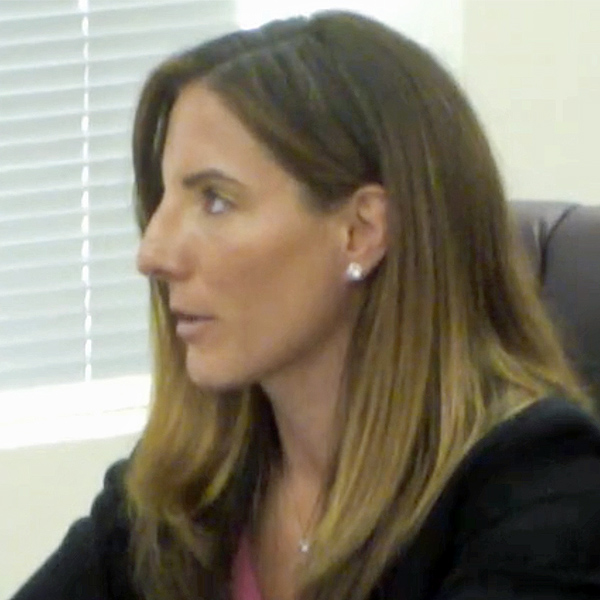AUSTIN, Texas — The National Association of Regulatory Utility Commissioners’ annual Summer Policy Summit attracted more than 1,000 state and federal regulators and their staffs; industry representatives; consumer advocates; and other stakeholders July 16-19 for discussions on understanding and preparing for the grid challenges that lie ahead.
NERC’s recent summer reliability assessment lent considerable fodder to the discussions, with its warning that extreme weather, plant retirements and transmission outages have made supply shortfalls more likely across much of the U.S. The report also stressed the need to maintain and expand a dispatchable baseload generation fleet to keep pace with the higher demands that electrification and climate change are placing on the grid. (See West, Texas, Midwest at Risk of Summer Shortfalls, NERC Says.)
Speaking on a panel discussing the reliability challenges, Stan Connally, Southern Co.’s executive vice president of operations, said shrinking reserve margins are complicating the task of balancing clean energy with affordability.
“Frankly, I think one of the risks as we move forward here is we let those priorities get out of balance,” he said. “It’s just important that we continue having these reliability conversations, because at the end of the day, and in these very, very extreme conditions, our customers need us to have the lights on. Air conditioning matters, right?
“Resource adequacy is a big deal. Shrinking reserve margins are something we have to pay attention to around resource adequacy,” Connally added. “We have an aging fleet. We also have a growing solar base. … Mixing that all together to ensure resource adequacy for the long term has to be center stage of our planning.”
Fellow panelist Stacey Doré, Vistra’s chief strategy and sustainability officer, said her company’s diversified fleet gives it a unique advantage in achieving balance between reliability, affordability and sustainability.
“We do see near-term reliability risks because we think that the projections show that thermal generation is going to be retiring at a faster pace than we can make up for with other assets in the long term,” she said. “We’re all trying to get to the place where we have enough carbon-free, reliable generation to replace those thermal assets … but the pace at which that is happening is not keeping up with the pace at which thermal assets are retiring.”
SPP COO Lanny Nickell said the transition to renewables and decarbonization will continue to take place, “whether or not you like it.” With clean energy goals set for 2050 and progress to be made by 2030, he said he used to be more worried about 2030 than 2050.
“Unfortunately, over the last several months, I’m no longer as worried about 2030 as I am about right now,” Nickell said. “Our analysis has indicated there’s a growing amount of risk that we can’t sustain. We’ve seen about 8,000 MW of thermal generation retired over the last seven, eight years. In that same time frame, we’ve seen about 24,000 MW of wind generation added. That sounds like a pretty good tradeoff. It hasn’t been, and our loss-of-load expectation studies that we have to perform every other year are indicating an increased risk associated with that transition.
“It may sound like we’re three Chicken Littles up here trying to scare everybody, but there are solutions. It’s just a lot of these solutions will take time to see the full effect,” he added.
Nickell reminded the audience that transmission is “an important tool in the toolkit” and offered resilience as an example. Instead of valuing transmission for its reliability and production cost savings through reduced congestion, he said, grid operators also should realize the importance of shipping energy across their seams.
“After Winter Storm Uri, we came to realize that resilience has got to be one of those measures,” he said, noting that when the storm took thermal resources offline in February 2021, SPP was able to meet 14% of its demand with imports from MISO and PJM. “We were importing on a transmission system that’s never seen this much energy flow across it … because we had strong interconnections throughout much of the East and to the West. That’s the value of resilience. It’s like insurance. You don’t really want to have to use it, but man, you’re thankful when you have it.”
Valuing Energy Efficiency
Speaking on a panel debating extreme weather’s reliability implications, former FERC and Texas regulatory staffer Alison Silverstein pointed out that energy efficiency doesn’t need to be accredited for effective load-carrying capability (ELCC) “because it doesn’t break down.”
She said that with an “intentional strategic demand response,” the industry will be able to take advantage of two areas that have “important synergistic effects” for the wind and solar fleet.
“With the right choices and energy efficiency and demand response, you are bringing down the peak overall,” Silverstein said. “With the amount that you need to fill in the evening as the wind is ramping up and the solar is dropping, you have less of a gap to fill out every hour. The more we can do to make our homes and buildings more energy efficient, the less we have to do in terms of that kind of ramping and the less vulnerable we are to the ELCC for this kind of thorough plan.”
Texas established the nation’s first energy efficiency resource standard (EERS) in 1999 by requiring utilities to achieve a specified amount of energy efficiency savings annually. It has since been leapfrogged by 26 other states and now has the weakest EERS in the country, according to a 2021 white paper by the American Council for an Energy-Efficient Economy.
Silverstein posited that the state’s roughly 4 million poorly insulated homes, more than a third of the total stock, is one reason ERCOT has been able to meet record demand this summer. (See ERCOT Demand Exceeds 82 GW for 1st Time.)
“It’s because 45% of Texans are low income and energy insecure. They are setting their thermostats at unsafe levels,” she said. “They are doing voluntary conservation of electricity, not because they’re trying to be good public citizens for the reliability of the grid, but because they can’t afford to consume enough electricity to stay comfortable. If they were able to consume more electricity, our demand would be significantly higher, and [ERCOT CEO] Pablo [Vegas] is going to be pacing the back of the control room.”
Remembering the 2003 Blackout
NARUC President Michael Caron, a commissioner on the Connecticut Public Utilities Regulatory Authority, kicked off the summit by moderating a panel marking the 20-year anniversary of the 2003 Northeast Blackout. The memories of that day still linger with the panelists.
“I think about this every day and before I go to bed at night, which explains the bags [under my eyes]. It was terrifying,” NERC CEO Jim Robb said. “I never thought I would be in the role that I am today.”
Texas Public Utility Commissioner Jimmy Glotfelty was on vacation camping with his family and several others in New Mexico, having just helped stand up an electricity office in the U.S. Department of Energy. Like other government officials, he left D.C. for much of the month. Fortunately, he had access to the camp site’s “communications center,” a closet with one phone and a fax machine.
“I spent the next two and a half days in that phone booth on phone calls with folks from NERC, our [National] Labs, folks from the White House and in Canada, trying to figure out how we would do this investigation, which we’ve never done before and had no real understanding of how to jumpstart it,” Glotfelty said. “We found the path forward that really started the Monday after the blackout, sending teams out to the utilities, out to the ISOs, to NERC, and put a plan together to really study what happened. So, we had all sorts of phone calls back and forth, and it was an interesting place to be for the biggest blackout in North American history.”
Suedeen Kelly was in FERC’s library the day of the blackout preparing for a Senate hearing on her nomination to be a commissioner.
“You felt disbelief at first and then shock and horror, and then a realization that I was soon to join an institution that was amazingly well prepared to try and do something about this,” she said.
An interim report identified the cause — a software bug that left operators unaware they had to shed load after transmission lines drooping into vegetation caused the initial outage — but did not make any recommendations. That came early in 2004 from an independent commission formed by President George W. Bush and Canadian Prime Minister Jean Chrétien.
The report team ran into a late roadblock when the Canadians said the final report had to be translated into French.
“‘How long will that take?’” Glotfelty remembered asking. “‘Three weeks.’ We said, ‘No way.’ We ended up getting support from the State Department, which translated the report in two days.”
The report and the Energy Policy Act of 2005 led to numerous changes in the industry. Most important, it gave greater authority to NERC to enforce standards that previously had been treated as guidelines. It also led to changes in how operators handled transmission outages.
“The greatest thing we did was shed load,” Glotfelty said, referring to ERCOT’s response during the 2021 winter storm that almost brought the Texas grid to its knees. “What happened in 2003 was the wrong action. System operators were scared to shed load. They figured they would get fired or their companies would get beat up by their regulators.
“In Texas, we did that. People still got fired, but we saved the system,” he added. “We saved 30 days of economic and human suffering by shedding load and making sure the transmission system stayed viable. So that was really an important understanding from the 2003 blackout.”
Asked whether the country might see another blackout like the one 20 years ago, Robb said, “I feel generally quite good about how the risks of 20 years ago were addressed.” Indeed, his organization’s recent State of Reliability report found that the North American bulk power system generally remains highly reliable and resilient.
“If you look at the performance of the electric grid as we define it from a reliability perspective, we have made substantial improvements, but the risk profile continues to grow,” Robb added, pointing to renewables’ growing share of the fuel mix. “We are working with our partners — NARUC, the gas sector, the technology sector — to try to figure out how we can solve these issues that nobody can solve with an edict. There’s been a lot of evolution of the model that was created, but I think we should all be extraordinarily [confident].”
Will EPA Rule Accelerate Change?
EPA’s recent proposed regulations to reduce carbon emissions from fossil-fired power plants under Section 111 of the Clean Air Act would set nationwide standards on plants based on whether they are new or existing, their fuel type, frequency of usage, capacity and how long they plan to operate. (See EPA Proposes New Emissions Standards for Power Plants.)
Naturally, the proposal has raised concerns within the industry.
“We are the reliability watchdogs for North America, and we don’t dissect the particularities of this rule,” said NERC’s Fritz Hirst, director of legislative and regulatory affairs. He compared his agency to the Night’s Watch, which protects the main setting of the television series “Game of Thrones” but holds no allegiance to any of the show’s feuding kings and lords.
“Our role was to provide this common good, but I think it is kind of obvious to say that this rule will continue to accelerate the pace of change,” Hirst said. “In NERC’s view, managing the pace of change is the central challenge for reliability.”
In the short term, natural gas will continue to be a primary fuel source, GridLab Executive Director Ric O’Connell said.
“Natural gas just a couple of decades ago was kind of a hobby fuel, right? It was the summer-peaking fuel,” he said. “Natural gas has really come from kind of the sidelines … now it is 40% of our electric generation. The electric system is the largest user of the gas system, and we haven’t really changed the way we contract and think about delivery of gas. It’s now a year-round baseload fuel, and in the winter, it’s really competing with other uses like heating.”
Emily Sanford Fisher, Edison Electric Institute’s executive vice president of clean energy, said with coal fuel’s use down to less than 20% of the nation’s fuel mix, non-emitting resources (renewables and nuclear) account for more than 40% of electricity consumption.
“The industry is in a different spot,” Fisher said, noting that about 50 of EEI’s members have made voluntary commitments to reduce their emissions to zero or net zero, albeit “not on the time frame that EPA puts out.”
“That means that we are generally in agreement about where the industry is headed, and this is really a question about pace and timing and the role of technology,” Fisher said. “Interestingly, all of the conversation in 2014-2015 was about coal. All of the conversation today is really about the role of natural gas, and that reflects this change in our generation mix. You can see from the rule that EPA is pretty concerned about our reliance on gas, and we’d like to make sure that it puts some bumpers around how much gas generation remains a part of our mix.”
Time is Now for Nuclear
One month after taking the stage during Edison Electric Institute’s thought leadership forum to promote nuclear energy’s role in a carbon-free future, Julie Kozeracki, a senior adviser with the Department of Energy’s Loan Programs Office, returned to Austin to highlight advanced nuclear reactors. (See “Nuclear Needs a Breakthrough,” Overheard at EEI 2023.)
Kozeracki said she has been leading a DOE initiative on nuclear commercialization that has resulted in a report, “Pathways to Commercial Liftoff: Advanced Nuclear.” It says advanced nuclear technologies, such as Gen III+ reactors similar to conventional generators and Gen IV reactors that use novel fuels, provide a “proven option” to supply the 550 to 770 GW of additional clean, firm capacity necessary to reach net zero.
“We see there being a need for 200 GW of new nuclear capacity, in addition to the roughly 100 GW we have operating today,” Kozeracki said. “That’s because in any decarbonization scenario, we see there being a need for upwards of 700 or 800 GW of clean, firm capacity. Because regardless of whether you build a ton of renewables or a crazy amount of renewables, you need some firm capacity to help balance the intermittency of renewable generation. And nuclear is one of the only options proven at scale.”
She put in a plug for small modular reactors, saying they can provide more certainty of hitting cost targets and likely will play an important role in the early scale-up. Kozeracki said commitments for new nuclear are needed as soon as possible.
“The time to start on that was yesterday,” she said. “The choices in front of us are not between new nuclear, which could feel risky or expensive, because your other options are also going to be risky and expensive. It’s really important to recognize that nuclear has a vital role to play in getting to decarbonization at scale, and anything we can do to start those conversations and those decisions sooner is going to be really critical for getting us on the path there.
“Everyone keeps saying that they want to be fourth, and they would like someone else to go first, second or third. But you can’t have a fourth reactor if folks don’t sign up for one, two and three.”
